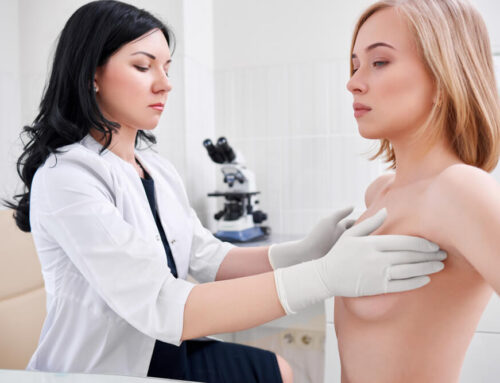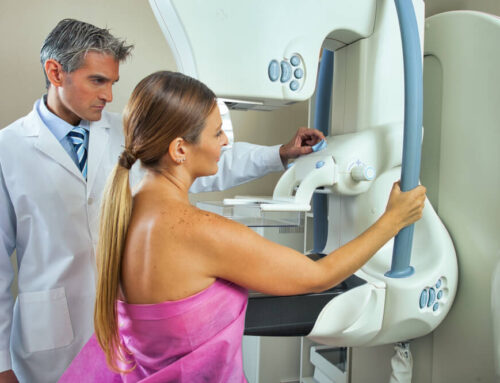Breast lesions are a common medical condition that can cause concern for women. They can be benign or malignant and range in size, shape, and texture. Understanding the different types of breast lesions, their causes, and available treatment options can help women make informed decisions about their health. In this article, Breast Care Center Miami provides a comprehensive overview of breast lesions, including information on benign and malignant tumors, diagnostic tests, and treatment options.
What Exactly Are Breast Lesions?
Breast lesions refer to any abnormal breast tissue. They can be either benign (noncancerous) or malignant (cancerous). Having a breast lesion evaluated by a doctor is a must, as early detection and treatment of breast cancer can significantly increase the chances of successful treatment. A mammogram or ultrasound is often used to identify breast lesions, and a biopsy is needed to determine if a lesion is cancerous.
Different Types of Breast Lesions

There are several different types of breast lesions, including:
- Cysts: fluid-filled sacs that are usually benign and can be drained or removed.
- Fibroadenomas: solid, benign tumors that are typically smooth and round and can be removed if causing discomfort.
- Papillomas: benign growths that occur in the ducts of the breast and can cause breast discharge.
- Ductal Carcinoma in Situ (DCIS): a non-invasive form of breast cancer that occurs within the ducts of the breast.
- Invasive Ductal Carcinoma: a type of breast cancer that spreads beyond the ducts into the surrounding tissue.
The type and stage of the lesion, as well as the patient’s overall health, will determine the best course of treatment. Benign lesions do not pose a threat to life and can often be treated with observation or removal. In contrast, malignant lesions require more aggressive treatment, such as surgery, radiation therapy, and systemic therapy (such as chemotherapy or hormone therapy). Regular self-exams and a routine mammogram can help in the early detection and prompt treatment of breast lesions.
Potential Causes of Breast Lesions
The exact cause of the formation of abnormal breast tissue is not always known. However, certain factors are believed to increase the risk of developing breast lesions, including:
- Hormonal changes: fluctuations in hormones such as estrogen and progesterone can increase the risk of breast lesions.
- Family history of breast cancer: a family history of breast cancer increases the risk of developing breast lesions.
- Age: the risk of developing breast lesions is higher for people younger than 35.
- Physical trauma: the formation of fat necrosis from a surgery or injury can increase the risk of developing breast lesions.
- Lymphocytic mastitis: more common in people who have diabetes.
It is important to note that many women with breast lesions have no known risk factors, and the development of breast lesions is not necessarily a direct result of these factors. As mentioned, a routine mammogram and self-examination can significantly affect one’s quality of life. Additionally, maintaining a healthy lifestyle, including a balanced diet and regular physical activity, can help reduce the risk of developing breast lesions.
Can Noncancerous Lesions Turn Into Cancer?
Noncancerous (benign) breast lesions do not have the potential to spread to other parts of the body or cause death, but they can sometimes develop into cancer. This transformation is rare, but it is still essential to have any breast lesion evaluated by a doctor to monitor for any changes or growth. Benign breast lesions that are left untreated can also increase the risk of developing subsequent breast cancer.
For example, if a fibroadenoma is left in place for a long time, it can undergo changes that make it more challenging to determine if it is benign or malignant. In addition, the presence of a benign lesion in the breast can make it more difficult to detect other cancers that may be present. If a benign lesion is identified, a doctor may recommend close monitoring or removal to reduce the risk of any potential transformation.
The Diagnosis of Breast Lesions
Breast lesions are typically diagnosed through a combination of medical history, physical examination, imaging tests, and biopsy. During a physical exam, a doctor will feel for any unusual lumps or changes in the breast tissue and may recommend additional tests if a suspicious area is detected.
Imaging tests, such as mammography, ultrasound, and MRI, can help create detailed images of the breast tissue and identify any lesions or abnormalities. Mammography, which uses low-dose X-rays to create images of the breast, is often the first test used to diagnose breast lesions. If a suspicious area is identified on a mammogram, an ultrasound may be performed to provide additional information about the lesion and whether it is solid or filled with fluid. An MRI can also be used to create detailed images of the breast tissue, especially if a lesion is detected on a mammogram or ultrasound.
A biopsy, which involves removing a sample of the breast tissue for examination under a microscope, is the only way to diagnose a breast lesion as benign or malignant definitively. The type of biopsy performed will depend on the size and location of the lesion and the patient’s health. For example, a fine-needle aspiration biopsy may be performed if the lesion is small and filled with fluid. In contrast, an excisional biopsy may be recommended if the lesion is larger or solid.
It is essential to work closely with a doctor to determine the most appropriate diagnostic tests and biopsy techniques for each individual case and make an accurate diagnosis.
The Typical Treatment of Breast Lesions

Breast lesions are typically treated based on their type and whether they are benign or malignant. Benign breast lesions, such as fibrocystic changes, fibroadenomas, and papillomas, can be treated with observation, surgery, or other minimally invasive procedures. For example, a fibroadenoma can be surgically removed or monitored over time if it is small and not causing any symptoms.
Malignant breast lesions, such as ductal carcinoma in situ (DCIS) and invasive ductal carcinoma, require a more aggressive approach, like radiation and systemic therapy. The specific treatment plan for a malignant breast lesion will depend on various factors, including the lesion’s size and location, the cancer stage, and the patient’s overall health.
In many cases, a combination of treatments may be recommended, such as surgery followed by radiation or systemic therapy. In addition to traditional treatments, some patients may also consider complementary or alternative therapies, such as acupuncture or herbal supplements, to manage symptoms or side effects of treatment.
Discussing all treatment options with a doctor and creating a personalized treatment plan that meets the patient’s individual needs and goals is absolutely crucial. Regular follow-up appointments and imaging tests can help monitor for any abnormal breast tissue changes or growth of the lesion and adjust the treatment plan as needed.
Schedule Your Appointment Today
If you notice any unusual change in your breasts, don’t wait to report it to your doctor. Our goal at Breast Care Center Miami is to provide each patient with individualized, top-tier medical attention. We take great pride in assisting our patients during what may be a challenging time in their lives and in providing them with the care that is second to none. People of all ages are invited to use our facilities. We cater to each patient’s unique requirements, regardless of their diagnosis.






